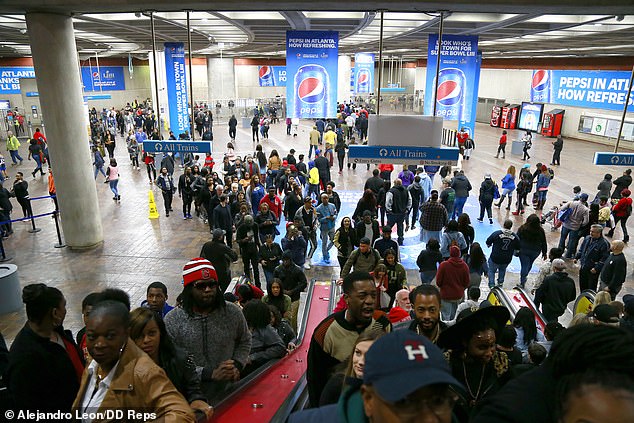A respected study by a think tank has underscored the massive demographic shift in the United States since the start of the pandemic, with millions more Spanish-speaking residents joining as the white population plummeted.
The Hispanic population grew by 3.2 million between April 2020 and July 2023, while the number of whites decreased by 2.1 million, as a result of immigration and birth and death rates, according to a study by the Brookings Institution.
That means Hispanics accounted for 91 percent of U.S. population growth in those three years.
At the same time, black, Asian and mixed-race populations grew by hundreds of thousands each, while the number of Native Americans expanded by about 23,000 fewer individuals.
William Frey, the demographer who wrote the reportsays an “explosion of diversity” is transforming the nation.
Crowds at a train station in Atlanta, Georgia, offer a snapshot of America’s changing demographics.
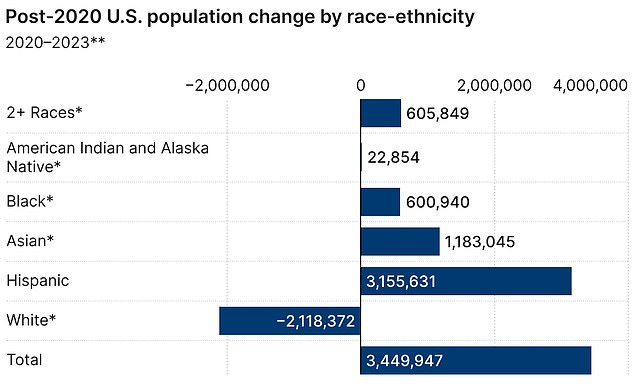
The white population of the United States shrank by 2.1 million between 2020 and 2023, while all other groups grew, according to Brookings
Frey urged policymakers to ensure that schools, universities and businesses were prepared for these changes.
While he welcomed the changes, they are a concern for some white Americans and others, who worry the country is losing its character and becoming too diverse.

Demographer William Frey calls it an “explosion of diversity.”
In responses to the study on social media, critics said the US was “quietly turning into a third world country” and that the changes were due to “massive illegal immigration” across the lax southern border.
Some, including tech entrepreneur Elon Musk, say Democrats want influxes of people from South America as part of a “great replacement” of whites to ensure electoral victories for decades to come.
Illegal immigration is a top concern for voters in the 2024 election between Democratic Vice President Kamala Harris and anti-immigrant Republican former President Donald Trump.
Trump has criticized criminal Hispanic immigrants and has promised to deport millions of “illegals” if elected in November.
Harris, in her capacity as President Joe Biden’s “border czar,” urged Central American migrants “not to come” to the United States.
But the administration is seeking to expand the number of people who can apply for citizenship and is frequently accused of failing to secure the border with Mexico.
While America’s demographic shift toward a minority of non-Hispanic whites has been projected for decades, new Brookings research shows how the population has reshaped itself in just a few years.
Overall, the U.S. population grew by 3.4 million during the period, says Frey’s analysis of U.S. Census Bureau data.
At the same time, the white population fell by 2.1 million, and the decline in the white youth pool led to a 1.6 million drop in the number of Americans under age 18.
The youth population in the United States is already predominantly white, and by 2050 it will be made up of 60 percent Hispanics, blacks and other minorities.
The decline in the white population is largely due to more deaths than births.
Due to an aging population, there are proportionally fewer white women of childbearing age and fertility rates are lower than in other groups.
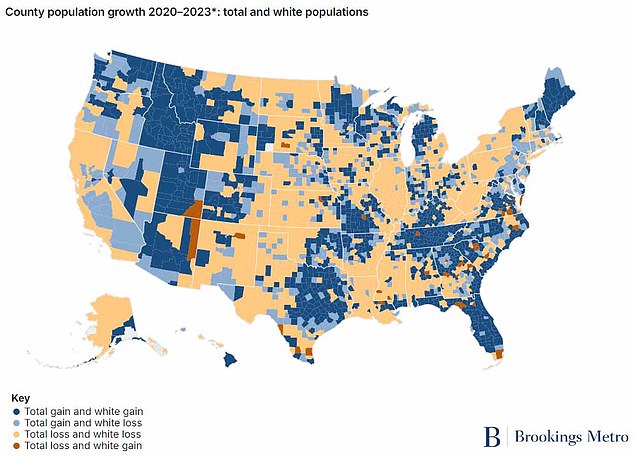
The white population is declining in almost every part of the country, researchers say

Illegal immigration across the US-Mexico border explains part of the growth of the Spanish-speaking population in the United States
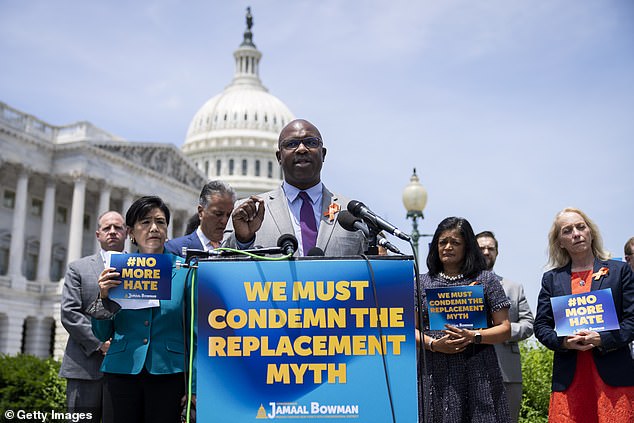
Democratic politicians, including Jamaal Bowman (pictured), have sought to combat fears that white people are being “replaced.”
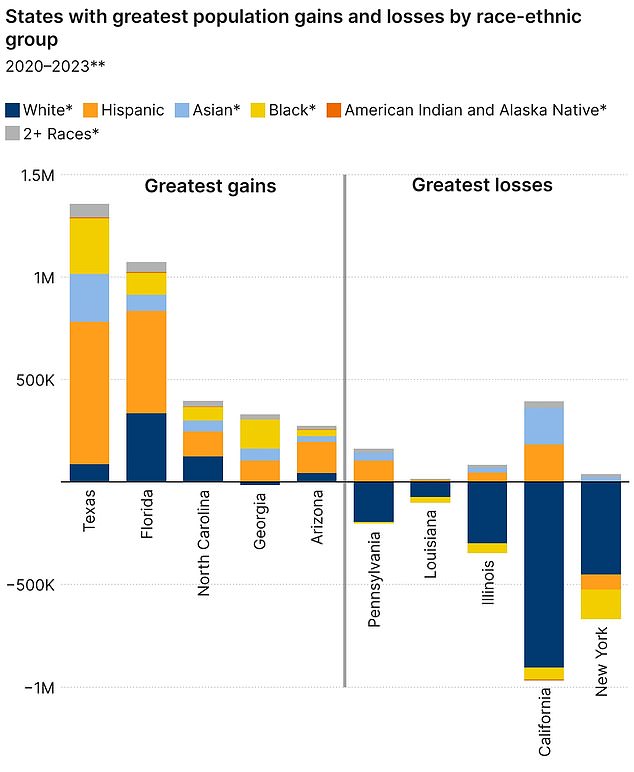
The decline in the white population has been especially pronounced in California, New York and other states that have lost people overall.
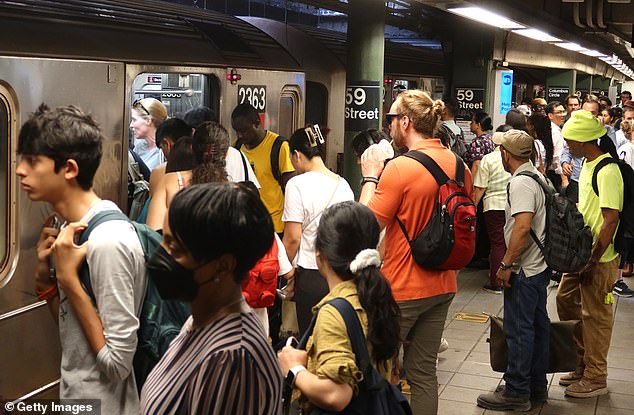
The shrinking New York City area has lost 431,175 white people, but only 41,318 Hispanics, the report says.
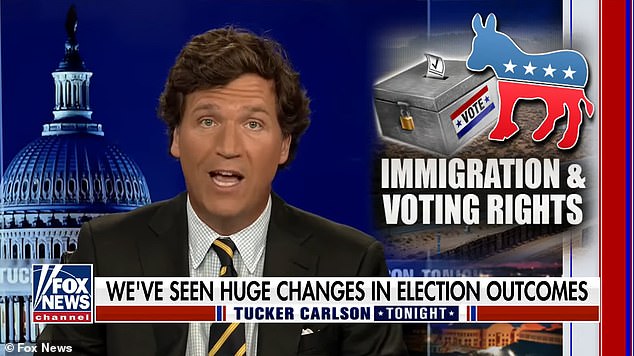
Conservatives, including former Fox News host Tucker Carlson, have helped push the “great replacement” conspiracy theory into the mainstream.
The rapid growth in the number of Hispanics and other minorities is due to natural increase (measured as births minus deaths) and immigration, the study found.
Looking ahead, Hispanics and other nonwhite groups are projected to make up 44 percent of the population in 2030, with Hispanic residents accounting for one-fifth of the total.
By 2050, a quarter of the population will be Hispanic residents and more than half will be non-white groups.
Frey said the data reinforces his “view that the nation’s explosion of diversity” represents an important part of its future.
“The productivity of the workforce and the economic well-being of the country will depend in large part on the success and integration of the increasingly young and multiracial population of today and tomorrow,” he said.
In total, 15 states experienced population declines, led by California and New York, which lost a combined 1.2 million residents over the three-year period.
Most states saw their youth populations decline. California has nearly 500,000 fewer children than before the pandemic, and New York has 272,000 fewer.
Meanwhile, Florida and Texas gained about 100,000 young people each.
Populations declined in six of the 15 largest metropolitan areas. The New York City metropolitan area had the largest overall decline, with fewer white, black and Hispanic people, while the population of Asians and people of two or more races increased.
Demographic changes will impact several aspects of society, Frey said.
The changes will likely play a key role in local politics as various racial coalitions gain or lose strength, since people often vote along racial lines.
Musk, the billionaire CEO of Tesla, is among those warning that Democratic politicians are allowing illegal immigration to build and consolidate political power and create a “permanent one-party, deep socialist state.”
With agencies.
(tags to translate)dailymail

